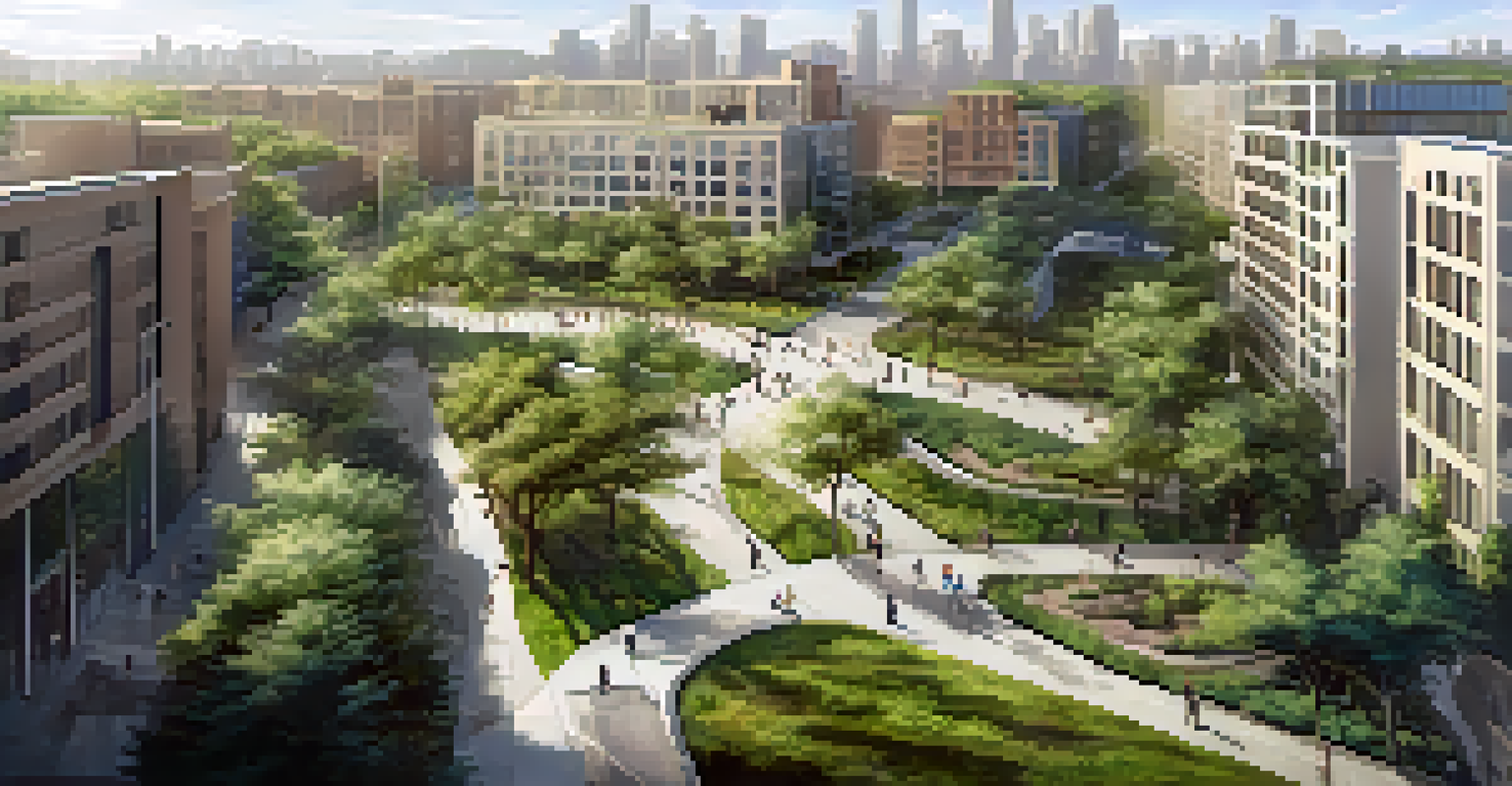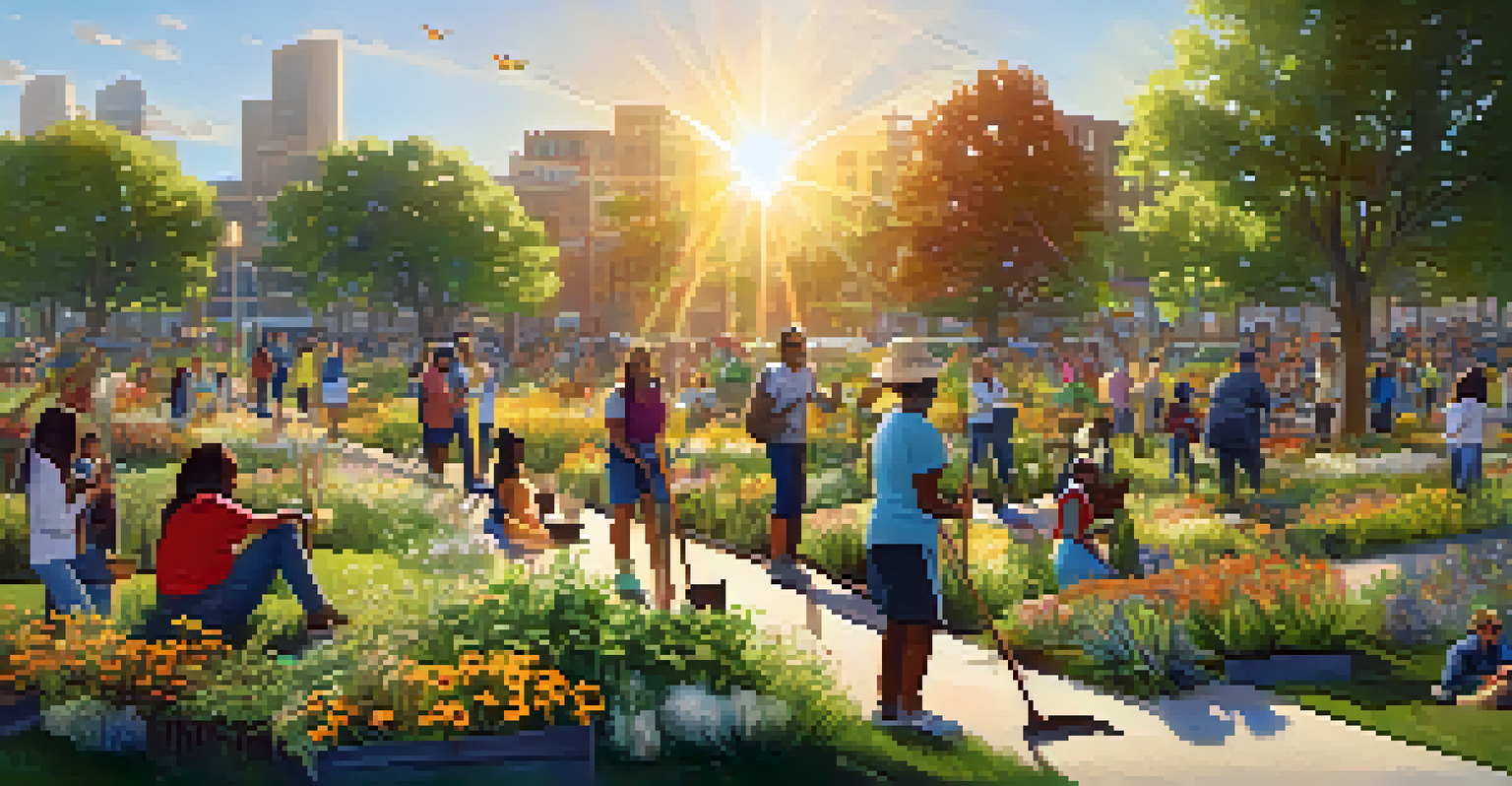Urban Habitats: Adapting Wildlife to California's Cities

The Challenge of Urbanization for Wildlife
Urbanization presents a significant challenge for wildlife in California. As cities expand, natural habitats are increasingly fragmented, making it difficult for animals to find food, shelter, and mates. The transformation of landscapes can lead to a decline in species populations, pushing them closer to the brink of extinction.
The future will either be green or not at all.
Take the example of the California gnatcatcher, a small bird that relies on coastal sage scrub for survival. With urban development encroaching on its habitat, the gnatcatcher has become a symbol of the struggles faced by many species. Understanding these challenges is the first step toward finding solutions that allow wildlife to coexist with urban development.
As we delve deeper into this topic, it's essential to consider not only the animals affected but also the ecosystems that provide crucial services to urban areas. Healthy ecosystems contribute to clean air, water, and biodiversity, all of which are vital for human well-being.
Adapting to City Life: Success Stories
Despite the challenges posed by urban environments, many species have shown remarkable adaptability. For instance, raccoons and coyotes have become adept at navigating city landscapes, often foraging for food in trash bins or finding shelter in abandoned buildings. Their ability to thrive in these settings highlights the resilience of certain wildlife.

Another success story is that of the peregrine falcon, which has made a comeback in urban areas. These birds of prey have taken to nesting on skyscrapers, proving that even the most iconic species can adapt to human-made structures. Their resurgence serves as a reminder that with the right conditions, wildlife can flourish alongside urban development.
Urbanization Threatens Wildlife
As cities expand, wildlife habitats become fragmented, jeopardizing species like the California gnatcatcher.
These examples underscore the importance of creating environments that support both wildlife and urban living. By integrating green spaces and wildlife corridors, cities can help foster a harmonious relationship between nature and urban life.
The Role of Urban Green Spaces
Urban green spaces play a crucial role in supporting wildlife in California's cities. Parks, gardens, and green roofs provide essential habitats for various species, allowing them to thrive despite the surrounding urban sprawl. These areas serve as sanctuaries, offering refuge and resources for wildlife.
In nature, nothing exists alone.
Consider the case of San Francisco's Golden Gate Park, which is home to a diverse array of flora and fauna. The park not only provides recreational space for residents but also serves as a vital habitat for birds, butterflies, and other wildlife. This interplay between urban recreation and ecological conservation is essential for fostering biodiversity.
Moreover, urban green spaces can also enhance the quality of life for city dwellers. Studies have shown that access to nature reduces stress, improves mental health, and fosters community engagement, making them invaluable assets for both people and wildlife.
Wildlife Corridors: Connecting Habitats
Wildlife corridors are essential for maintaining ecological connectivity in urban areas. These pathways allow animals to move between fragmented habitats, reducing isolation and promoting genetic diversity. In California, initiatives have been launched to create corridors that link parks and natural areas, facilitating safe passage for wildlife.
For example, the Santa Monica Mountains are home to several wildlife corridors that enable species like mountain lions to traverse urban landscapes. These corridors are crucial for their survival, allowing them to find mates and access resources while minimizing human-wildlife conflicts. Such projects illustrate the importance of strategic planning in urban development.
Importance of Urban Green Spaces
Parks and gardens in urban areas provide crucial habitats for wildlife while enhancing the quality of life for residents.
Creating and maintaining these corridors requires collaboration between city planners, conservationists, and the community. By working together, we can ensure that wildlife has the necessary pathways to thrive in increasingly urbanized environments.
Community Engagement in Wildlife Conservation
Community engagement is vital for the success of wildlife conservation efforts in urban settings. When residents actively participate in conservation initiatives, it fosters a sense of stewardship and responsibility towards local wildlife. This involvement can take many forms, from participating in habitat restoration projects to advocating for wildlife-friendly policies.
One inspiring example is the Los Angeles Audubon Society's efforts to educate locals about native birds and their habitats. Through workshops and community science projects, they empower residents to take action, whether it's planting native vegetation or creating bird-friendly spaces. This grassroots approach not only benefits wildlife but also strengthens community bonds.
Moreover, involving the community in conservation fosters awareness and appreciation for urban wildlife. As people learn more about the species that share their neighborhoods, they become more inclined to protect them, creating a more harmonious coexistence between humans and nature.
Innovative Urban Planning for Wildlife
Innovative urban planning can significantly impact wildlife conservation in cities. By incorporating ecological principles into design, planners can create spaces that benefit both people and wildlife. For instance, incorporating permeable surfaces and native landscaping can enhance habitats while also managing stormwater runoff.
Cities like San Diego have embraced these principles, implementing policies that prioritize biodiversity in urban development. The integration of wildlife-friendly features, such as nesting boxes and green roofs, demonstrates how thoughtful design can create harmonious urban ecosystems. These initiatives highlight the potential for urban spaces to support not just human activities but also diverse wildlife.
Community's Role in Conservation
Active community engagement in wildlife initiatives fosters stewardship and helps build a harmonious coexistence between humans and nature.
Ultimately, innovative urban planning requires a shift in mindset—recognizing that urban spaces can coexist with nature rather than displacing it. By prioritizing wildlife in city design, we can create environments that celebrate biodiversity and enhance the quality of life for all inhabitants.
The Future of Urban Wildlife in California
The future of urban wildlife in California hinges on our ability to adapt and innovate. As climate change and urbanization continue to reshape the landscape, it is crucial to remain proactive in our conservation efforts. This means not only protecting existing habitats but also creating new opportunities for wildlife to thrive in urban settings.
Collaboration among various stakeholders—government agencies, conservation organizations, and the community—is essential to ensure the long-term success of urban wildlife initiatives. By sharing knowledge and resources, we can implement strategies that prioritize ecological health and resilience in the face of ongoing challenges.

As we look ahead, embracing a holistic approach to urban planning will be key. By recognizing the importance of wildlife in our cities, we can create sustainable environments that benefit both humans and the diverse species that call California home.